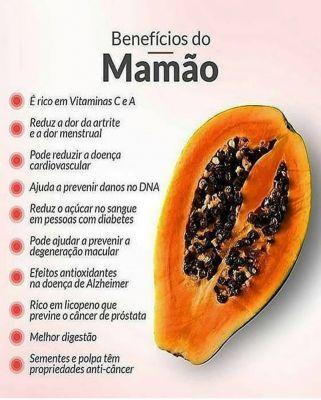
La papaya is a very important food in tropical countries, almost to be considered a staple food (in fact it could become one), and is used as a medicinal plant, while in temperate countries it is often used only as an exotic fruit or as an exotic taste in fruit juices and syrups.
Some papaya (Genus Vasconcella, like many species and varieties that can be hybridized with each other) you can consume the leaves and fruits, which can be eaten unripe and ripe, cooked raw or dried. Let's explore the properties and benefits of the fruits.
The fruit of the papaya
Il papaya fruit it is very variable, as mentioned, due to the numerous cultivars and the ease of hybridization of the various species of the genus Vasconcella, scientifically known until recently as Carica. The shape can be stretched, mammellonare with five outgrowths, globular, and the dimensions are very variable, as well as the flavor of the paste and its color.
In Southeast Asia the fruit is also often used green, not ripe, as a vegetable, and this choice is becoming more and more popular for various reasons: it is a very healthy food, local, easy to find, can replace staples imported from outside or scarce or complex to plant, such as rice and various non-local cereals. Let's go back to the properties and see what a ripe papaya fruit gives us.
Read also Papaya, how to eat it >>
The properties of papaya
The fruit of the papaya is rich in both carotenoids and polyphenols, which give it a powerful antioxidant effect, very important to counteract the onset of free radicals, a potential cause of the onset of cancer.
On the other hand, papaya is scarce in terms of vegetable fats extremely rich in vitamin C, well over 70mg for every 100 grams of pulp, which enhances the aforementioned antioxidant power of papaya. Furthermore has moderate amounts of other vitamins, especially folate (B9).
For the rest we can say that it provides a modest amount of trace minerals but has good contents of lycopene, the carotenoid responsible for the red color which, although not considered an essential nutrient, is extremely valid for maintaining high skin health and quality of vision.
As for lycopene, papaya represents the fourth natural source and, in quantity, even surpasses tomatoes. Generally the fruit is recommended in tropical countries to reduce bad cholesterol, to lose weight (it has very few calories and very little fat), however improve the immune system and prevent infections, for keep diabetes under control, to improve eyesight (especially thanks to lycopene and other carotenoids such as zeaxanthin and cryptoxanthin), for help digestion (thanks to papain), to prevent the effects of aging (we said that it acts against free radicals), for fight weak hair and dry skin problems, to rehydrate and to reduce the risk of cancer thanks to its strong antioxidant and alkalizing powers.
The dried papaya
La dried or fermented papaya pulp seems to produce high levels of substances capable of fighting the oxidative stresses of DNA, and therefore seem to be effective in the prevention of various pathologies, in particular we speak of Alzheimer's disease, for the treatment of which the fermented papaya pulp is sometimes applied as part of the cure.
Green papaya does not differ much from ripe papaya, has a different quality of dietary fiber, but they contain the same quantities of antioxidants, mineral salts and enzymes, such as the aforementioned papain.
Green papaya provides more calories, but due to the substances contained in its latex, regular consumption is not recommended for pregnant women, while it seems instead to be of benefit for women during the menstrual cycle, which seem to help with the uterine spasms that regular consumption of green papaya seems to potentially induce.
Read also The properties of fermented papaya >>


























